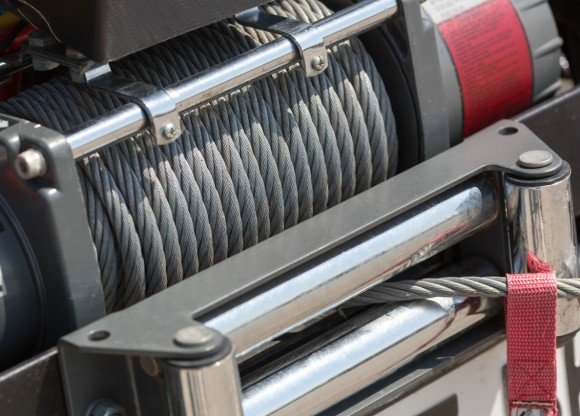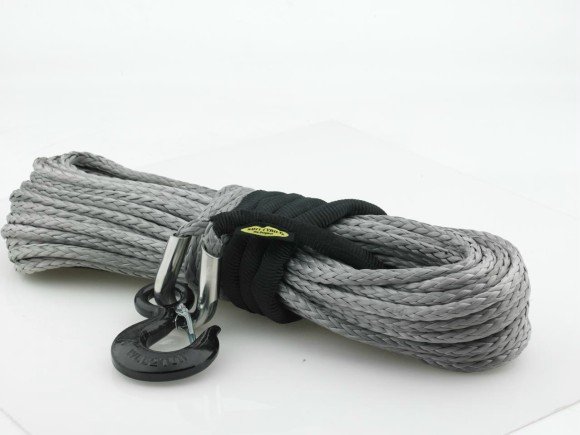For the past two decades, synthetic rope has been rising in the off-road industry as the preferred winching material. Still, the differences between steel cable and synthetic rope are much less concretely understood than they should be. Both have their pros and cons and it is important to understand them before making a choice between the two.
Perhaps the biggest difference between steel cable and synthetic rope is their inherent safety. Anyone who has ever been around a steel cable when it snaps or has watched a YouTube video of it happening knows there is a lot of dangerous energy stored in a steel winch cable. If the line breaks, that energy turns the cable into a violent projectile, capable of dismembering or even killing people.

For this reason, proper safety precautions are vital, no matter what sort of winch cable you have. When using steel cable:
When winching, no matter what material the line is, you must know your winch. All truck and Jeep parts have capacity limits: light truck tires can only handle so heavy a load, each vehicle has a maximum towing capacity and different grades of winch line are only designed to handle so much force. Know how much your winch can handle before trying to pull yourself out of a mess or you’ll just end up in a bigger one.
Steel cable is also prone to developing burrs, so gloves are required to operate a winch loaded with steel cable. It may develop kinks, making re-spooling the cable difficult and decreasing strength.
There are also many benefits to using a steel cable over synthetic rope. For instance, steel cable requires much less maintenance than synthetic rope does, as it is very durable and unlikely to fray. Winching around a rock or tree is not much of a concern with steel cable, as the tree or rock is more likely to wear down than the cable is. This makes steel cable great for tough winching in tight areas where friction can become a real problem. It is also less expensive than its synthetic counterpart.
On the other hand …
Synthetic ropes are much less likely to cause injury than steel cables in the event of a break, as they are lighter and lose tension rapidly, falling to the ground. If a break were to happen, synthetic rope can also be re-braided in the field using the proper technique. It is a temporary fix to get you out of a bind, but it’s more than you can do with a broken steel cable.
Because it is so much safer than steel cable, many 4x4 clubs and competitions require that synthetic rope is used. It makes sense, as these group activities mean there are plenty of innocent bystanders and helpers who could be injured by someone else’s steel cable snapping.

Despite being much thinner and weighing only 1/7 of what steel cable does, synthetic rope is about 1.5 times stronger than steel cable. It is also highly flexible, easy to handle and floats – making it perfect for winching from mud or water.
On the downside, synthetic rope requires much more maintenance than steel cable does. While it is very strong, it is also more fragile than steel cable. Synthetic rope is susceptible to damage from UV light, high temperatures (150° F and higher), chemicals, friction and grit.
However, proper care and maintenance can negate all of those weaknesses. With Synthetic rope, it is important to:
There are also aluminum and roller fairlead options for synthetic rope, which insure the heat created from winching will not damage or melt the line.
Aside from maintenance concerns, synthetic rope’s greatest weakness is its ability to hold water. Not only does this mean it will absorb all sorts of abrasive grit which will need to be washed out, but in cold weather it can freeze solid. If off-roading in freezing temperatures, it is important to keep this in mind and try to keep the line dry.
On the flip side, synthetic rope comes in all sort of dazzling colors. I don’t see any steel cables out there capable of matching my seat covers.